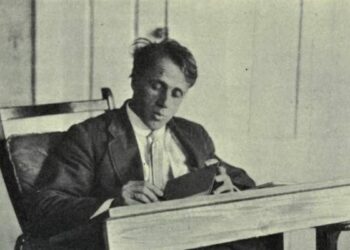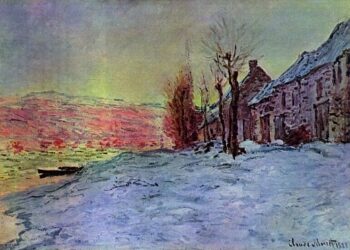Table of Contents
ToggleIntroduction
Birdfoots Grampa Summary & Themes By Joseph Bruchac Birdfoot’s Grampa Summary & Themes By Joseph Bruchac Renowned Native American poet and storyteller Joseph Bruchac has explored the interconnections of identity, history, and culture via his craft. By fusing traditional storytelling methods with modern literary genres, Bruchac’s work raises awareness of the Native American experience. Birdfoot’s Grampa, one of his important pieces, masterfully captures these ideas. Through the eyes of a grandson named Birdfoot, who is talking about his grandfather, the poem explores the intricacies of family, heritage, and cultural survival.
Birdfoot’s Grampa is a moving reflection on the intergenerational bond, tradition preservation, and elder knowledge transmission. The poem honors the tenacity of Native American culture, particularly in the face of colonization and cultural erasure, in addition to examining familial ties. Bruchac provides readers with a glimpse of a culture that honors memory, continuity, and deference to elders through striking imagery.
Summary of Birdfoot’s Grampa by Joseph Bruchac
Birdfoot’s Grampa is told from the viewpoint of a small child named Birdfoot, who is thinking back on his grandfather’s life and legacy. The poem’s narrative is centered on the wisdom and teachings that the grandfather imparts to his grandson, as well as the spiritual and cultural lessons that are passed down through generations. The poem emphasizes the deep connection between the two, highlighting the bond that exists not only through familial love but also through shared cultural identity.
The speaker expresses respect and affection for his grandfather right away, and the poem’s title alludes to a close, personal relationship—Birdfoot’s Grampa. In addition to being a member of the family, Grampa is shown as a storehouse of wisdom, customs, and history. His life experiences are rich with stories, wisdom, and the echoes of a culture that is deeply tied to the land, ancestors, and the cycles of nature.
Read more
The speaker recollects particular recollections of his grandfather throughout the poem, detailing his behaviors, mannerisms, and physical attributes. The specifics of these memories provide insight into Grampa’s personality; he is shown to be both wise and modest, strong and kind. From the grandson’s point of view, Grampa also represents the resilient nature of Native American customs and culture in spite of the difficulties they encounter in the contemporary world.
The poem emphasizes more general issues of cultural survival in addition to the individual recollections. The customs, language, and storytelling of the tribe are preserved by Birdfoot’s Grampa. As an elder, he serves as a conduit to the past, guaranteeing that the following generation inherits their people’s knowledge. The poem examines the value of oral storytelling, information transfer, and the part elders play in maintaining cultural identity through these exchanges.
The poem also addresses the issues of mortality and aging as it goes along. Grampa is not unbeatable, even with his power and knowledge. The poem conveys a sense of inevitable progress—the understanding that time wears down and that the knowledge and lessons of one generation must be transmitted before they are gone. The poem’s physical imagery, which describes the grandfather’s body in ways that allude to both his vitality and fragility, emphasizes this idea.
The poem ends with a moment of introspection and epiphany. The speaker, who has matured and gained knowledge from his grandfather, recognizes that the principles his grandfather taught him apply to both the present and the future.

Major Themes in Birdfoot’s Grampa by Joseph Bruchac
1. Generational Connection and Family Bonds
The bond between generations, particularly between Birdfoot, the speaker, and his grandfather, is one of the most important themes of Birdfoot’s Grampa. The poem emphasizes how family members’ lives are intricately linked and how values, wisdom, and stories are transmitted from one generation to the next. Grampa is a cultural and familial character who serves as a link between the past and the future. The poem emphasizes the value of family throughout, with the speaker expressing respect for his grandfather as a cultural guardian and father figure.
Birdfoot and his grandfather enjoy a deeper link that is based on respect and a shared past, going beyond ordinary familial love. Native American principles of regard for elders and the belief that one’s identity and ancestry are best understood through older generations are reflected in Birdfoot’s admiration for his grandfather.
Read more
2. The Preservation of Cultural Identity
The preservation of cultural identity is another major issue in Birdfoot’s Grampa. The poem highlights the value of preserving traditional customs, tales, and practices in the face of modernization and cultural erasure through Grampa’s position as an elder. In Native American civilizations, where knowledge and history are transmitted orally rather than in writing, the concept of oral storytelling is especially important. In this way, Grampa is presented as a living representation of the tribe’s past, sustaining the tradition of cultural continuity.
According to the poem, preserving culture involves more than just upholding customs; it also entails making sure that the next generation appreciates and comprehends them. For Native American tribes, where the threat of assimilation has frequently resulted in the loss of language, rituals, and historical knowledge, this is particularly crucial. As the custodian of this cultural legacy, Grampa plays a vital role in ensuring that Birdfoot and other community members stay rooted.
3. The Role of Elders and Storytelling
The theme of storytelling is intricately tied to the role of elders in the poem. Grampa is depicted as a storyteller whose wisdom is passed on through the act of sharing stories. This theme highlights the significance of oral tradition in Native American cultures, where stories are a vehicle for transmitting cultural values, history, and knowledge. Storytelling is not just a means of entertainment; it is a vital tool for preserving the identity of the community.
The poem portrays Grampa as someone who understands the importance of these stories and their power to shape the identity of future generations. He is more than a grandfather—he is a keeper of history, a teacher, and a link to a past that must be remembered in order to move forward. His role as a storyteller reflects the deep respect for the elderly in Native American communities, where elders are viewed as the most important custodians of culture and wisdom.
4. Aging and Mortality
As with many poems that reflect on the relationship between generations, Birdfoot’s Grampa touches on the themes of aging and mortality. Grampa, despite his wisdom and strength, is not immune to the effects of time. The poem subtly acknowledges that the elder’s time is limited, and there is a sense of urgency in the way Birdfoot recalls his grandfather’s teachings. There is an underlying message that the knowledge passed on by the elder must be shared before it is too late, and that the younger generation must learn and carry on the legacy of their ancestors.
This theme of mortality is also a way for the poem to emphasize the cycle of life. Just as Grampa passes on his knowledge, Birdfoot will one day be the one to share those stories and traditions with the next generation. The poem implies that the wisdom of the elders does not die with them; it is continuously reborn through the act of storytelling and remembrance.
5. The Resilience of Native American Culture
The central theme of Birdfoot’s Grampa is the Native American culture’s ability to withstand hardships like colonization and the demands of modernity. The poem expresses a strong sense of pride in Native communities’ resilience in the face of decades of hardship. Grampa is a symbol of the persistence of Native customs, and his knowledge serves as a reminder that Native cultures are dynamic and everlasting rather than static or remnants of the past.
The poem emphasizes the resilience of the Native American identity, which is passed down through the generations, through Birdfoot’s memories. An important theme is the tenacity of Native cultures, represented by Grampa, who serves as a reminder to the reader that cultural identity encompasses both the past and the future.

Conclusion
The significance of family, culture, and intergenerational relationships is emphasized in Birdfoot’s Grampa, a very poignant and introspective poetry. Joseph Bruchac examines the importance of seniors in sustaining cultural identity and transmitting knowledge through the character of Grampa.
The poem offers a moving reflection on life’s cycles and the value of remembering and respecting the past while addressing more general topics of aging, cultural resilience, and the continuing ties between family members. Birdfoot’s Grampa pays homage to the resilience and knowledge of Native American customs as well as the strength of intergenerational bonds with its rich visuals and profound emotional depth.
Read more
FAQ
Q1: What is the significance of the title Birdfoot’s Grampa?
The title Birdfoot’s Grampa highlights the personal and familial nature of the poem. “Birdfoot” is the name of the grandson, and “Grampa” reflects the affectionate, familiar relationship between him and his grandfather. The title suggests that the poem will explore the intimate bond between the two, as well as the larger cultural significance of their relationship.
Q2: What role does the grandfather (Grampa) play in the poem?
Grampa plays a crucial role as a cultural and familial anchor in the poem. He is a storyteller, a source of wisdom, and a link to the past. As an elder, Grampa embodies the traditions and values of Native American culture, passing on stories and teachings to Birdfoot. He is also a symbol of the resilience of Native cultures, ensuring that the wisdom of the past is not forgotten.
Q3: How does the poem explore the theme of aging?
The poem subtly addresses the theme of aging through the figure of Grampa. While Grampa is portrayed as a strong, wise figure, there are hints that he is aging and that his time on Earth is limited. The poem reflects the inevitability of aging and mortality, underscoring the importance of passing on knowledge and traditions before it is too late.
Q4: How does Birdfoot’s Grampa reflect Native American cultural values?
The poem reflects several Native American cultural values, particularly the importance of family, respect for elders, and the preservation of oral traditions. Grampa’s role as a storyteller emphasizes the value placed on oral history in Native communities, and the poem underscores the significance of cultural survival in the face of external pressures.
Q5: What is the main theme of Birdfoot’s Grampa?
The main theme of Birdfoot’s Grampa is the passing down of wisdom and cultural knowledge through generations. The poem explores the relationship between a grandson and his grandfather, highlighting the role of the elder as a keeper of stories, traditions, and identity. It also addresses the importance of cultural preservation, the inevitability of aging, and the enduring resilience of Native American culture.
Related
Such is Life by Joseph Furphy Summary and ThemesIn "American Literature"
Bengal Tiger At The Baghdad Zoo Summary And Themes By Rajiv JosephIn "Poems"
Joe Gould’s Secret Essay Summary By Joseph MitchellIn "Essays"

















